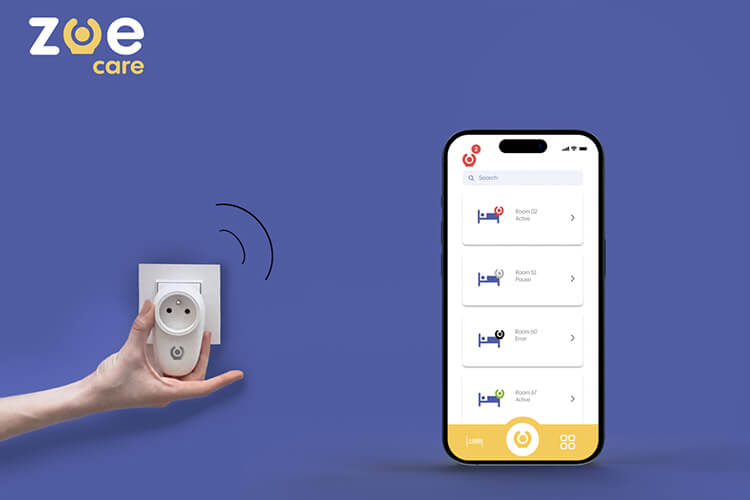
In the ever-evolving landscape of digital innovation, the realms of fitness, health, and wellness have been remarkably transformed. With the dawn of 2024, technology has become an integral part of our wellness journeys, offering a myriad of tools that cater to our physical and mental well-being. Wearable technology, such as smartwatches and fitness trackers, have become personal health assistants, providing invaluable insights into our daily health routines. Virtual workshops bridge the gap between traditional gym classes and the convenience of technology, while virtual reality offers an immersive and exciting fitness training experience. Additionally, technology has made significant strides in mental health support, with digital tools providing accessible care and therapies. With each advancement, we are witnessing a revolution in how we approach our well-being, making it more accessible, personalized, and engaging than ever before.

Wearable Tech Takes Center Stage
The surge in wearable technology has revolutionized the way we approach health and fitness. Smartwatches and fitness trackers have become essential accessories, providing us with an unprecedented level of insight into our daily health routines. These devices are no longer just about telling time or counting steps; they now offer a vast array of features that keep us on track and motivated to achieve our wellness goals.
Smartwatches and fitness trackers go beyond basic activity tracking. They can monitor heart rate, sleep patterns, calories burned, and even provide personalized workout recommendations. With the integration of advanced sensors and AI technology, these devices have become essential tools for maintaining a healthy lifestyle.
Apple Fitness+ is a prime example of how smartwatches and fitness trackers have evolved. The curated workout series and synchronized audio libraries cater to various fitness levels and preferences, ensuring that every user can find a workout that suits their needs. This level of personalization and engagement keeps users accountable and motivated to stay active.
Virtual Workshops: A Blend of Digital and Personal Touch
While wearable tech offers convenience and personalization, some fitness enthusiasts still crave the human element in their workouts. That’s where virtual workshops come in. These digital platforms bridge the gap between traditional gym classes and the convenience of technology, allowing participants to connect with expert coaches and like-minded communities from the comfort of their own homes.
With virtual workshops, distance is no longer a barrier to accessing top-quality fitness instruction. Through live-streamed sessions on platforms like Zoom or interactive online communities, users can join guided workouts, yoga classes, or even receive personalized training from professional coaches. This blend of digital and personal touch creates a unique and immersive fitness experience that caters to a diverse range of fitness and wellness needs.
Virtual workshops not only provide access to expert guidance but also foster a sense of community. Participants can interact with instructors and fellow attendees, offering support and motivation. This sense of connection and accountability is crucial for maintaining a consistent fitness routine and achieving long-term goals.
VR: A Game-Changer in Fitness Training
Step into a world where exercise isn’t just a chore but an exciting adventure. Virtual reality (VR) has transformed the way we approach fitness training, providing immersive and highly engaging workouts that transport us to new and exciting locations.
VR fitness apps offer users the opportunity to engage in various activities and sports from the comfort of their own homes. You can climb mountains, row through picturesque cities, or even participate in virtual martial arts classes. The possibilities are endless.
Not only are VR workouts enjoyable, but they also provide an effective means of staying fit. The immersive nature of VR allows users to fully engage their bodies and minds, resulting in a more intense and effective workout. Moreover, the gamified elements and virtual challenges keep users motivated and committed to their fitness goals.
With VR, fitness training becomes an experience that goes beyond the physical. It’s an opportunity to explore new realities, challenge oneself, and have fun while breaking a sweat. Whether you’re a beginner or an experienced fitness enthusiast, VR has something for everyone.
Digital Mental Health Technologies: A Pillar of Wellness
When we talk about wellness, it’s crucial to address not only physical health but also mental well-being. Technology has played a significant role in advancing mental health support, providing users with tools and resources to manage stress, anxiety, and other mental health conditions.
AI-powered chatbots have emerged as valuable resources for instant mental health support. These chatbots use natural language processing and AI algorithms to engage with users, offering guidance, coping strategies, and resources. They provide an accessible and non-judgmental space for individuals to express their thoughts and emotions.
Virtual therapy sessions have also gained popularity, especially in a world where face-to-face interactions are limited. These sessions allow individuals to receive therapy and counseling services from the comfort of their own homes. Video conferencing platforms facilitate secure and confidential connections between therapists and clients, ensuring that mental health support remains accessible to all.
In addition to chatbots and virtual therapy, VR therapies have shown promising results in treating mental health conditions such as anxiety and PTSD. By creating virtual environments that simulate real-life situations, individuals can gradually confront and overcome their fears in a controlled and supportive setting.
Digital tools for mental health support empower individuals to take charge of their mental well-being. They provide a sense of control and agency in managing mental health conditions and offer valuable resources and support when needed.

The Growing Popularity of Home Workout Apps
The rise of home workout apps has transformed the fitness industry, making exercise more accessible and convenient than ever before. These apps offer a wide range of workout programs, personalized feedback, and injury prevention strategies, all in the palm of your hand.
One of the key advantages of home workout apps is their convenience and accessibility. Whether you’re a busy professional, a stay-at-home parent, or someone who prefers the privacy of home workouts, these apps cater to your needs. You can squeeze in a workout whenever and wherever it suits you, without the constraints of a gym schedule or commute.
Home workout apps also provide personalized feedback based on your performance and progress. They track your workouts, offer insights into your form and technique, and suggest modifications or adjustments to optimize your results. This personalized approach ensures that you’re getting the most out of your workouts and helps prevent injuries.
Moreover, many home workout apps integrate nutrition and recovery features, providing a holistic approach to fitness. You can easily track your meals, set nutrition goals, and receive personalized meal plans that align with your fitness objectives. Additionally, these apps often offer recovery routines, stretching exercises, and wellness tips to enhance your overall well-being.
The growing popularity of home workout apps signifies a shift in how we approach fitness. It’s no longer necessary to rely on gym memberships or expensive equipment to stay fit. With a smartphone and a reliable app, you have all the tools you need to create a personalized and effective fitness routine.
Personalized Fitness Programs: Tailored for Optimum Performance
When it comes to fitness, one size does not fit all. Personalized fitness programs have gained traction, offering tailored workouts and progress tracking to optimize performance and achieve individual goals.
Customized workouts are designed based on individual factors such as fitness level, goals, and preferences. Whether you’re looking to build strength, lose weight, or train for a specific event, personalized fitness programs cater to your unique needs. These programs take into account your current abilities and gradually progress to ensure your workouts remain challenging and effective.
In addition to tailored workouts, personalized fitness programs also integrate nutrition and recovery strategies. They provide guidance on calorie tracking, macronutrient distribution, and meal planning to support your fitness goals. Furthermore, these programs emphasize the importance of recovery, offering stretching routines, rest days, and wellness practices to optimize performance and prevent injuries.
The integration of technology in personalized fitness programs allows for seamless progress tracking. You can monitor your workouts, track your progress, and receive real-time feedback on your performance. This data-driven approach keeps you motivated and accountable, enabling you to make informed adjustments and continually strive for improvement.
Choosing a personalized fitness program is an investment in your well-being. It ensures that your workouts align with your goals and preferences and provides the support and guidance needed to achieve optimum performance.

Immersive Workout Experiences with VR Technology
Imagine stepping into a virtual fitness studio, where the possibilities are endless, and every workout is an interactive and engaging experience. VR technology is transforming the fitness landscape, creating immersive workout experiences that go beyond traditional routines.
With VR, you can explore exotic locations, participate in virtual group classes, or embark on adrenaline-pumping adventures—all without leaving your living room. These immersive workouts not only make exercise more enjoyable but also challenge your body and mind in new and exciting ways.
The interactive nature of VR workouts keeps users engaged and motivated. You can punch, kick, jump, and dodge as you follow along with virtual trainers and instructors. This level of interactivity adds a dynamic element to your workouts, ensuring that you’re fully engaged and working up a sweat.
In addition to the physical benefits, VR workouts can also have a positive impact on mental well-being. The escapism and sensory stimulation of virtual reality can help reduce stress, promote relaxation, and improve mood. It’s an opportunity to disconnect from the outside world and focus on yourself and your fitness goals.
Creating a virtual fitness studio in your own home is now a reality. With VR technology, you can transform your workouts into immersive and engaging experiences that take your fitness journey to new heights.
Digital Tools for Mental Health Support
Taking care of our mental well-being is just as important as looking after our physical health. Digital tools have emerged as valuable resources for mental health support, providing accessible and convenient ways to manage stress, promote relaxation, and foster positive mental well-being.
Guided meditation and mindfulness apps are a popular choice for individuals looking to incorporate mindfulness into their daily routines. These apps offer a variety of guided meditations, breathing exercises, and relaxation techniques. By following along with these practices, you can reduce stress, improve focus, and develop a sense of calm and clarity.
Therapist-moderated online communities provide a supportive and non-judgmental environment for individuals seeking mental health support. These communities offer a space to share experiences, ask questions, and receive guidance from both professionals and peers. The anonymity and accessibility of online platforms make it easier for individuals to connect and seek support without the fear of stigma or judgment.
Digital tools for mental health support empower individuals to take an active role in managing their mental well-being. Whether it’s through guided meditation apps or online communities, these tools provide a sense of control, support, and resources when navigating the complexities of mental health.

Tech-Driven Wellness Trends for 2024
As we step into the future, it’s important to stay updated on the latest wellness trends and innovations in technology. Here are some tech-driven wellness trends to watch out for in 2024:
-
AI in Health Monitoring and Diagnosis: Artificial intelligence is increasingly being used to monitor and diagnose health conditions. From wearable devices that can detect and predict health issues to AI-powered algorithms that analyze medical data, AI is revolutionizing the way we approach health monitoring and diagnosis.
-
Smart Gym Equipment and Home Workout Systems: The integration of smart technology into gym equipment and home workout systems enhances the overall fitness experience. From connected treadmills and strength-training machines that track your workouts to virtual trainers and personalized workout plans, smart gym equipment offers convenience, engagement, and personalization.
-
Digital Platforms for Holistic Health Tracking: Holistic health tracking platforms consolidate data from various sources, such as wearable devices, nutrition trackers, and sleep trackers, into a single interface. These platforms provide a comprehensive overview of your health and wellness, allowing you to identify patterns, set goals, and make informed decisions about your lifestyle.
These trends demonstrate how technology continues to evolve and shape the wellness landscape. By embracing these tech-driven innovations, we can make wellness a seamless and integrated part of our daily lives.
Making Fitness More Accessible, Enjoyable, and Effective
Ultimately, the goal of technology in the health and fitness industry is to make wellness more accessible, enjoyable, and effective for everyone. Here are some ways technology is achieving this:
-
Removing Barriers to Entry: Technology breaks down barriers to entry by providing access to fitness resources and expertise from anywhere in the world. Whether it’s through virtual workshops, home workout apps, or online communities, individuals can engage in fitness activities without the limitations imposed by physical location or time constraints.
-
Gamification and Social Integration: Gamification elements, such as challenges, rewards, and leaderboards, make fitness more engaging and enjoyable. By turning workouts into interactive experiences, technology incentivizes individuals to stay consistent and motivated. Social integration further enhances this experience by allowing users to connect with friends, share achievements, and participate in group challenges, fostering a sense of community and support.
-
Enhancing Workout Efficiency: Technology optimizes workout efficiency by providing personalized feedback, progress tracking, and data-driven insights. Whether it’s through virtual reality workouts, personalized fitness programs, or smart gym equipment, technology ensures that every workout and training session is purposeful and effective. By leveraging these tools, individuals can maximize their results and progress towards their goals.
By embracing and incorporating technology into our wellness journeys, we can unlock new possibilities and achieve a higher level of health and well-being. From wearable tech and virtual workshops to VR fitness training and digital tools for mental health support, these innovations empower us to take control of our physical and mental well-being. So, embrace the power of technology and embark on a wellness journey that is seamlessly integrated into your daily life. Your health and happiness are just a click away.







